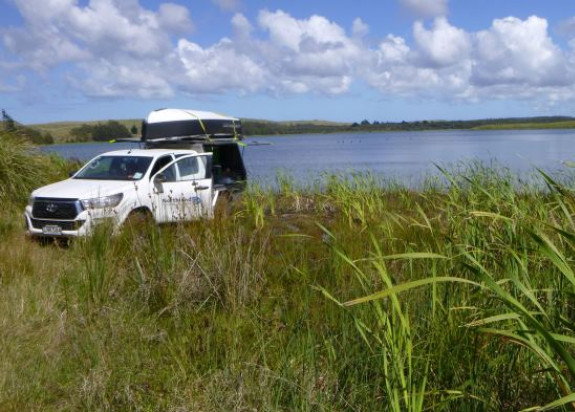Exploring the current and historic health of New Zealand's most northern lakes

New Zealand’s most northern iwi, Ngāti Kuri, and researchers led by scientists from GNS Science and the Cawthron Institute, will this week start scientifically sampling some of the country’s most remote lakes north of Kaitaia.
The sampling is part of a nationwide project called ‘Lakes380: Our lakes' health – past, present, future’ which aims to determine the health, wellness, and history of 10 percent of New Zealand’s 3800 lakes.
Ngāti Kuri Trust Chairman Harry Burkhardt said: “The project will help Ngāti Kuri become more aware, and better placed to implement the best systems that we can to protect our unique biodiversity, manage our biosecurity and most importantly enhance our own relationship with our natural world and these precious taonga.”
Northland has more than 400 dune lakes. Dune lakes are some of the rarest and most threatened aquatic habitats in the world. Working with Ngāti Kuri, the Lakes380 project team will take sediment cores and water samples from five lakes in the sand dunes just south of Cape Reinga.
They will analyse the samples to determine the health of the lakes over the past 1000 years to understand why and how their condition is changing. One of the target lakes – Lake Waitahora – is New Zealand’s most northern lake.
Project co-leader Dr Susie Wood of the Cawthron Institute said it was a real privilege to visit Lake Waitahora, which is likely one of the world’s most pristine dune lakes.
We know next to nothing scientifically about this lake and the animals and plants that live in it. We are excited to be working with Ngāti Kuri on this mahi.
We know next to nothing scientifically about this lake and the animals and plants that live in it. We are excited to be working with Ngāti Kuri on this mahi.
“This provides us with a unique opportunity to learn from their long association with these lakes and further enrich our knowledge of these precious places.”
Dr Wood said the lakes have high cultural significance to Ngāti Kuri and were often important sites for mahinga kai (traditional food gathering). Ngāti Kuri and the Lakes380 team will also sample Lake Te Ketekete, where more than 2500 people once lived in a lakeside settlement.
GNS Science Paleoecologist Dr Marcus Vandergoes, who co-leads the project, said Lakes380 will provide information to assist Ngāti Kuri and the Northland Regional Council in developing protection and restoration programmes for the lakes.

These lakes are home to a unique range of native plants and animals. Our project will use a range of new methods such as environmental DNA and scanning techniques to measure the current and past biodiversity of these globally distinct lakes.
The Lakes380 team will spend three weeks working on lakes north of Kaitaia. During August they will sample a further 20 lakes on the Pouto Peninsula.
